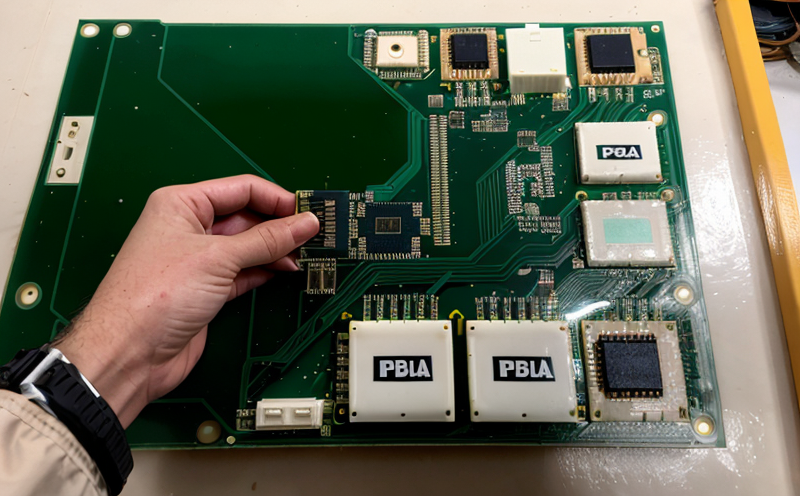PCB trace continuity inspection
In the realm of electrical and electronic systems, Printed Circuit Board (PCB) trace continuity inspection plays a crucial role in ensuring reliable performance. This service is essential for identifying open circuits within traces or connections on PCBs, which can lead to malfunctions in electronic devices.
The process involves thorough examination using non-destructive testing methods such as ohmmetry and impedance measurement. These techniques help determine if there are breaks in the conductive paths connecting components on a PCB. The inspection is vital for maintaining high-quality standards across various sectors, including consumer electronics, automotive manufacturing, telecommunications, and medical devices.
The importance of this service cannot be overstated, especially given the intricate nature of modern circuits. Any disruption in these traces can result in significant operational issues, necessitating timely detection through rigorous inspection processes. This ensures that products meet stringent quality control criteria before reaching end-users.
Accurate PCB trace continuity testing requires precise tools and methodologies to ensure reliability. For instance, using a multimeter or automated test equipment allows for rapid identification of faulty connections without causing damage to the board itself. Compliance with international standards such as IEEE 1682-2005 further supports this process by providing guidelines on best practices.
Understanding how each step contributes towards achieving accurate results is key to effective trace continuity inspections. From initial setup to final analysis, every aspect must be carefully considered to avoid errors that could compromise overall performance. By adhering strictly to these protocols, organizations can enhance their reputation for delivering reliable products while also reducing costly rework or scrap.
Moreover, modern advancements in technology have introduced more sophisticated solutions like automated systems capable of performing multiple tests simultaneously. These innovations not only improve efficiency but also increase accuracy by minimizing human error during manual inspections.
Applied Standards
- International Electrotechnical Commission (IEC) IEC 60914: Requirements for PCBs used in electrical equipment and systems
- Institute of Electrical and Electronics Engineers (IEEE) IEEE P1682 Standard - Method for Determining PCB Trace Continuity
These standards provide clear guidelines on the acceptable levels of resistance within traces as well as methods for measuring them accurately. Adhering to these specifications ensures consistency across different manufacturers and regions, promoting interoperability between components.
Benefits
- Avoids costly repairs by identifying issues early in the production cycle
- Enhances product reliability through consistent quality assurance practices
- Promotes compliance with industry regulations and safety requirements
- Reduces waste associated with defective products, leading to cost savings
The benefits extend beyond just manufacturing efficiency; they contribute significantly to customer satisfaction and brand reputation. By incorporating PCB trace continuity inspection into their quality assurance processes, companies demonstrate commitment to excellence.
Environmental and Sustainability Contributions
- Avoids the disposal of defective boards by catching issues early
- Minimizes energy consumption during production through efficient testing methods
- Promotes sustainable practices by reducing material usage due to fewer rework cycles
Beyond immediate operational advantages, this service supports broader environmental goals. By minimizing waste and optimizing resource use, it aligns with global initiatives aimed at promoting sustainability.





